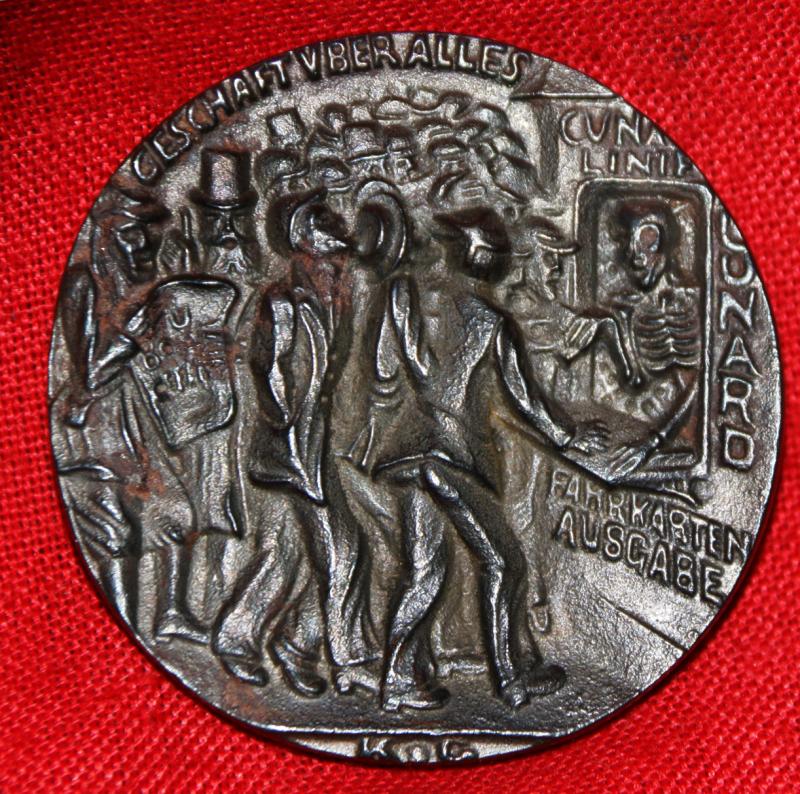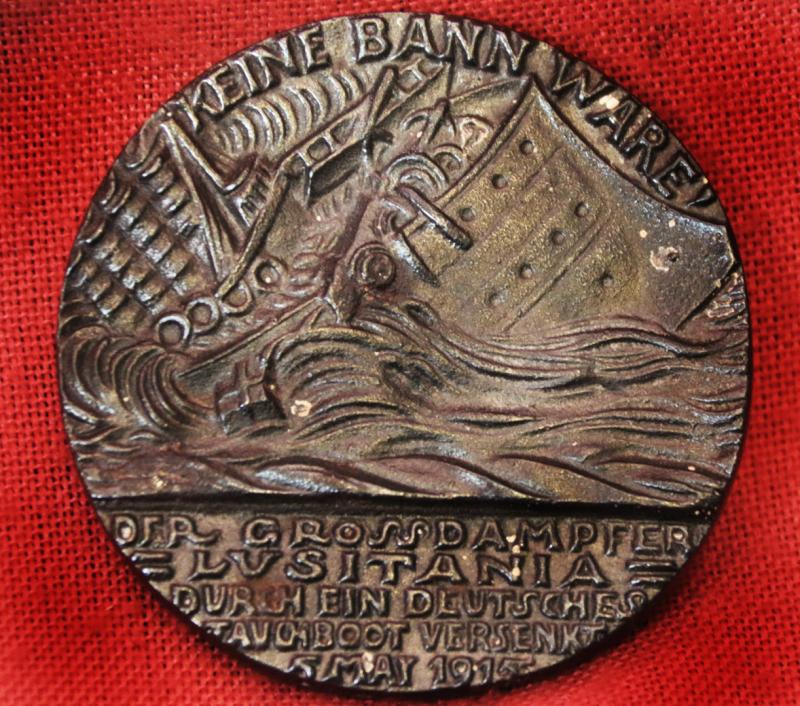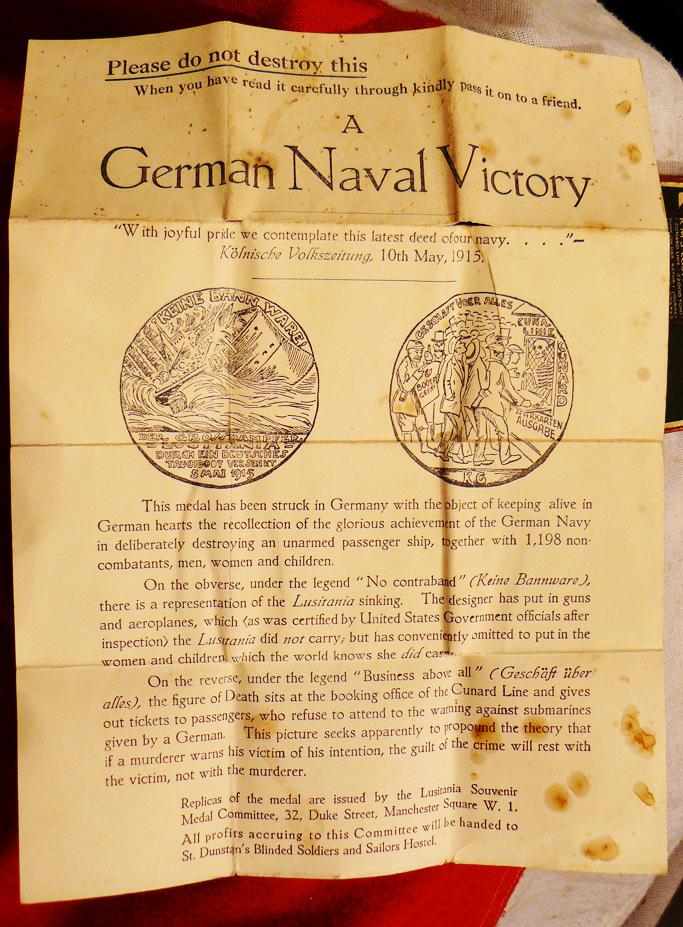Empire Goetz Medal 1915 - Great War Period, German, Sinking of the Lusitania Medal in Near Mint Condition
Originally made In August of 1915, several months after the sinking of the Lusitania, Karl Goetz produced the Lusitania medal in Germany and it was said to have been created to celebrate the sinking of the the Steam Ship RMS Lusitania, by the German U Boat U.20, in May 1915, and therefore the subsequent death of 1195 men women and children aboard, including 123 Americans. Unfortunately for Karl Goetz, he put the wrong date of sinking on the medal, an error he later attributed to an error in the newspaper account he had read. Instead of the correct date of 7 May, Goetz engraved 5 May, two days before the actual sinking of the Lusitania. This most reasonably allowed the British to claim that the Germans had waited for the ship to leave port and committed wholesale premeditated murder. Goetz later corrected the date but it was too late by then. This appalling event and the creation of a so-called celabratory medal in Germany was greeted with such outrage the medal was actually replicated in Britain, by Gordon Selfridge in April 1916, and distributed by sale for £1 Pound each for the benefit of widows and orphans in order to demonstrate to the people of Britain what callous fiends the Germans were, for them to plan and then celebrate the deaths of innocent civilians in such an extraordinary way. The original medal was actually apparently created to show the callousness of the Cunard Shipping Line in letting civilians travel upon a ship allegedly carrying arms, but it's production was entirely counter productive and without doubt an allied propaganda bonanza at the expense of the Central Powers. It is hardly surprising that this proved to be an extremely effective piece of British counter propaganda, and highlighted only too well the British cause against ruthless Imperial Germany. This is the British made version of the medal. Photo in the gallery of the Lusitania in New York Harbour.
In the gallery we show an original St. Dunstans leaflet, marked 'Please Do Not Destroy This', and all the proceeds for each of those medals sold, went to the St Dunstan's Hospital for Blind Ex-Servicemen
located in Brighton.
Ironically the Art Deco St Dunstans building is perched upon a Brighton secluded hill, high above the Brighton cliffs. It provides one of the most captivating and beautiful views of the English channel to be seen on the the entire UK coast, yet every patient was blind and thus would never see such a magnificent view.
This St Dunstans leaflet is an archive photo and not included, shown for historical interest only.
Over the decades we have had the honour greet and know many regular visitors from St Dunstans residents. Including, a few of the so-called 'McIndoe's Guinea Pigs' In the 1960's David senior's deep sea sailing ship moored at Newhaven used to take groups of blind veterans fishing off Brighton, and one resident we met many times was former Staff Sergeant Billy Baxter RHA, who became world famous as the blind world land speed record holder for a solo motorcycle at 167.84 mph. A record he held from 2003 until 2013. He now lives and works for charity in Llandudno, and became their Town Crier, the UK's only ever blind Town Crier.
Code: 25879
110.00 GBP







